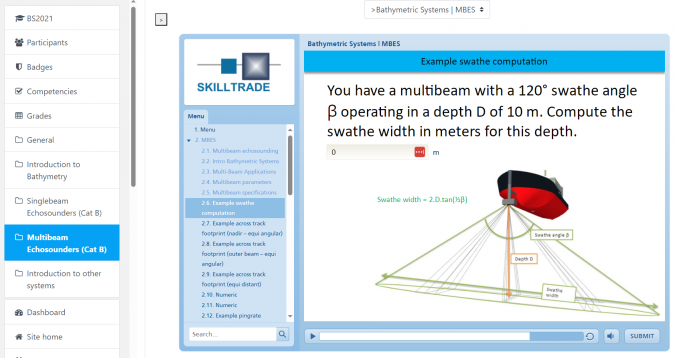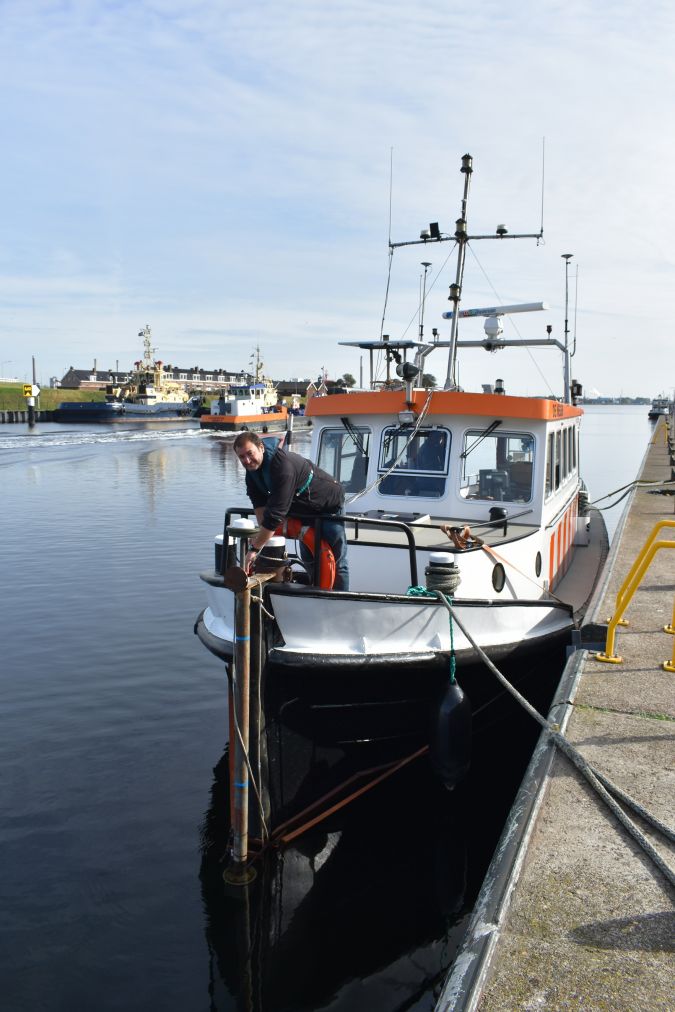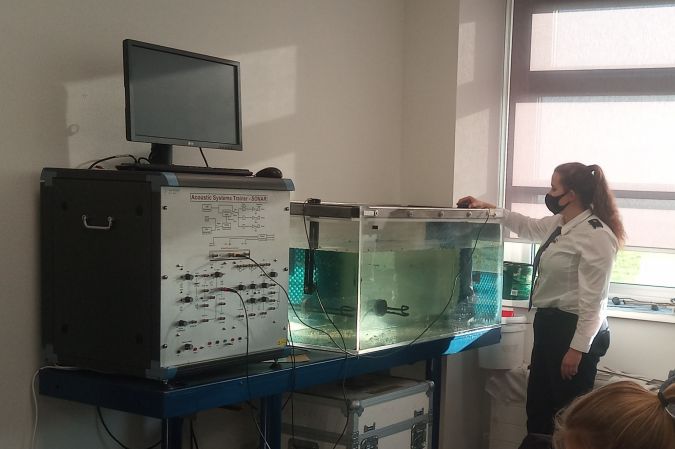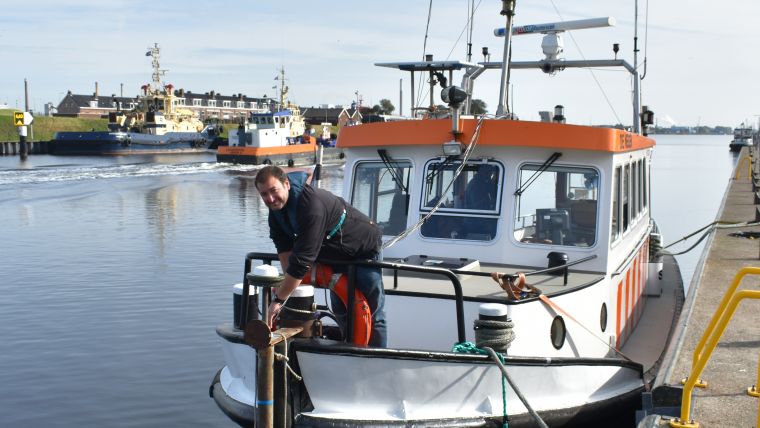Bathymetric sensors in education
The position of bathymetric sensors in hydrographic education is beyond discussion, as bathymetry is, was and will continue to be the bread and butter of the hydrographic surveyor. Bathymetric sensors are also the most difficult instruments to train students on, simply because they need to be powered and placed in the water. All very logical, but a challenge if you want to demonstrate every aspect of the sensors to students.
It is for these reasons that training on these sensors starts with theory. Both at Skilltrade (Cat-B) and the Maritime Institute Willem Barentsz (MIWB, Cat-A) in the Netherlands, the theory is provided in a blended form. Students receive an introduction to the subjects of underwater acoustics and bathymetric sensors from a lecturer, after which they follow an e-learning course with much more detail and a series of assessments on the subject. In both cases, the theory is concluded with a theoretical test.
However, this only proves that the student should be able to understand bathymetric sensors. He or she (LHBTQIA+) has not necessarily operated them in the real world. And it is this operation, as stated, which can be a bit of a challenge. For a simple understanding, the students start with the simple measurement of water depth with a lead and line. Together with tidal data, this allows the student to compute the first depth related to a datum.
The next step is working with actual echosounder data. Even in its most simple set-up, this requires not only an echosounder but also a computer with software and positioning system and, in the case of multibeam, gyro, sound velocity probe and inertial measurement unit. These are needed not so much for the echosounder settings but to create reliable data. Otherwise, it is hard for students to relate measurements as seen on the echosounder to the final product (an aside to old hands: manual scaling and plotting depths on a piece of paper are skills no longer taught at school it seems, and the industry also seems to have all but forgotten about them).

Students start by mobilizing the echosounder in a workshop, testing it in a tub of water to figure out the settings and interfaces. After that, the system is brought to the vessel and installed together with the other equipment. Then it is time to carry out the various calibrations and so on. On the Cat-B programme, there is little time but we work with professional students who in general require less time before getting to the practical aspects, and in most classes there are a few experienced surveyors who can give a hand. On the Cat-A programme, we work with students fresh out of secondary school who usually have no experience with the practical work at all.
The longer programme for these Cat-A students allows us to gradually increase their knowledge. Students start in their first year of training by simply looking at the installation created by the second-year students. No theory yet, just getting an idea of what it looks like. Then, at the end of the first year, students install and operate the instruments under the guidance of the second-year students during a two-week survey project around the local harbour of Terschelling. This is basically no more than ‘button pushing’.
In the second year, students first follow in-depth sensor theory, after which they get to install a system ‘without consequences’. That is, they do not need to produce any data. They go through the process of finding out for themselves how things work, and can make mistakes during this very short initial experience of a few days.
After this, it’s time to augment their knowledge with all the other systems and the software to ‘get it right’. To test their newly acquired knowledge, we put the students in the simulator. The nautical simulators at the MIWB have been ‘tweaked’ to output various survey data from the simulated environment to a survey computer. The students now set up the software and start to gather bathymetric data of the simulated environment, which they work into a final report and chart. At this point, they have operated the echosounder (for a short while) and set up and operated the software.
(The text continues beneath the image)

After this simulator project, the students are ready to try their hand at the real sensor in a real environment. They redo the project from the first year with one major difference: rather than being guided and pushing the buttons as instructed, second-year students are now responsible for the installation, calibration, operation and data processing. This also means applying all their knowledge and transferring enough of it to the first-year students to ensure an effective survey team. After concluding these two weeks, the second-year students are ready for their internship, where they will apply their knowledge to real-life projects all over the world.
After their 100-day internship in the first half of their third year, the Cat-A students return to the school benches. As part of their training, they obtain advanced knowledge of underwater acoustics, but not just in theory: using our Acoustic Simulator, the students evaluate various measurement methods and their accuracy and limitations. This gives them a deeper understanding of how the systems work. At the end of the third year, they complete a complex project (just as the Cat-B students have done), where they once more perform a survey utilizing various sensors. While during the second year the lecturers helped with any issues, in the third year the students need to complete the project alone. This ‘Oosterom’ survey is always a challenge, as it requires not just knowledge about the various systems, but also timely planning and human resource management. This is generally a much bigger challenge for regular Cat-A students than for the professional students of the Cat-B programme, who go through the same process.
So, how do you train students on bathymetric systems? In a sound, practical way using in-depth theory – pun intended.


Value staying current with hydrography?
Stay on the map with our expertly curated newsletters.
We provide educational insights, industry updates, and inspiring stories from the world of hydrography to help you learn, grow, and navigate your field with confidence. Don't miss out - subscribe today and ensure you're always informed, educated, and inspired by the latest in hydrographic technology and research.
Choose your newsletter(s)
























